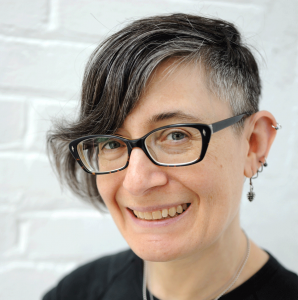The Comic Arts Fest continues with the next event on Saturday, February 11, 5:30 PM at the Half Moon Bay Library. The Library will be hosting a panel of Bay Area Women in Comics.
The panel will feature:
Liz Mayorga a working class artist from Southeast Los Angeles whose DIY art was shaped by the Punk and Hip Hop movements. Liz is an organizer of the San Francisco Zine Fest, and has self-published her stories and comics of class and identity, popular culture and horror as zines.
Tyler Cohen who lives in San Francisco and works as a freelance artist, teacher, and designer. Her collection of art-comics Primahood: Magenta is a journalistic dip into words and ideas that explores femaleness and combines autobiography and surrealism.
Shaenon Garrity ;a webcomics writer and artist, best known as the creator of Narbonic. She was an editor for Viz Media, working on over 20 manga series including Naruto, One Piece, Inuyasha, and Case Closed.
Get to Know Tyler Cohen Through Her Own Words
Let's find out more about this author-artist and what inspires her through a series of questions.
Did you read comics as a kid? Which ones?
I sure did! Any I could get my hands on! There was the comics section of the newspaper on Sunday, the cartoons in Highlights magazine, paperback collections of Peanuts and Archie... From the corner store I'd get Hot Stuff, Wendy, Casper, and Richie Rich (although the first two were my favorite, they were the most rare to find). When I was around 9 a hole-in-the-wall comics store opened up the next town over. They had a 10-cent bin, which meant I could get 2 comics for my 25-cent allowance! Mostly, these were Super-Friends stories, but I scored some Marvel presents and fell in love with Tigra. I probably would have read more comics after that if there had been comic books at the library like there are now.
What are the biggest influences on your work?
The Twisted Sisters cartoonists of the 80-90s were a huge influence on me. Roberta Gregory, opens a new window's Naughty Bits, Mary Fleener, opens a new window's gorgeous abstraction, Dori Seda, opens a new window, Phoebe Gloeckner, Aline Kominsky-Crumb--there are so many interesting, intimate, intense stories by women cartoonists. I have also been strongly influenced by work of women surrealist painters like Remedios Varo, Leonor Fini, opens a new window, Leonora Carrington, and Frida Kahlo (who did not identify as a surrealist). Photography by artists like Shirin Neshat and Nan Goldin. I read a lot--science fiction, memoir, non-fiction, fiction. But, really, I am influenced consciously, or not, by everything that engages my thoughts and imagination.
For any aspiring graphic novelists reading this interview. What advice do you wish someone had given you when you were first starting out?
Don't be afraid to make terrible work, just keep making comics. Not every story needs to be epic or encompass everything you want to say or draw. Start with shorter pieces and keep making them. Find other artists and cartoonists, ask for feedback, tips, learn from everyone. Getting good at anything takes time (years even!), it's the persistence of practice that gets you where you want to be (which may not be where you thought it would be when you started out, but that's part of the journey as an artist/creator). Most importantly: Have Fun!
What’s the one question you’ve never been asked in an interview, but always wanted to answer?
Hmm. I guess something I really enjoy talking about is process, but that tends to be interesting only to other cartoonists. That said...I am a slow writer. I build up bits of writing and drawing over time, kept in a seed-book, until I have enough material and the ideas congeal into a story. Then, I pull together the writing and drawings and create roughs--really, this is another layer of writing. These are refined to pencils, which I then ink. I do all my line-work with brush and waterproof India ink. For my surrealist character group, I used colored India inks on smooth, hot-pressed watercolor paper. For the MamaPants stories, I ink the black line-work, then scan and color the pages digitally in Photoshop.
Will you be going to Bay Area Women in Comics event?




Add a comment to: An Interview With Comic Arts Fest Author-Artist Tyler Cohen